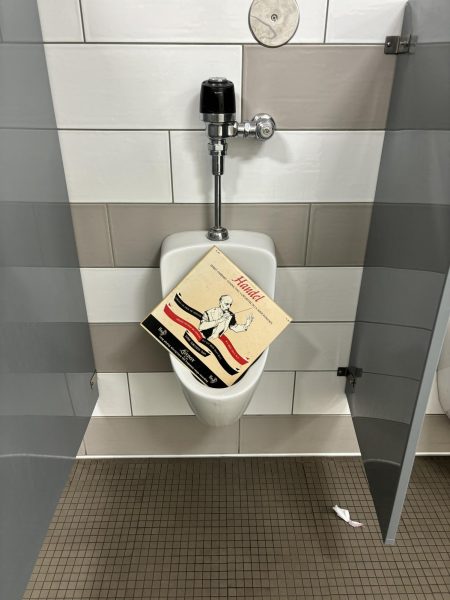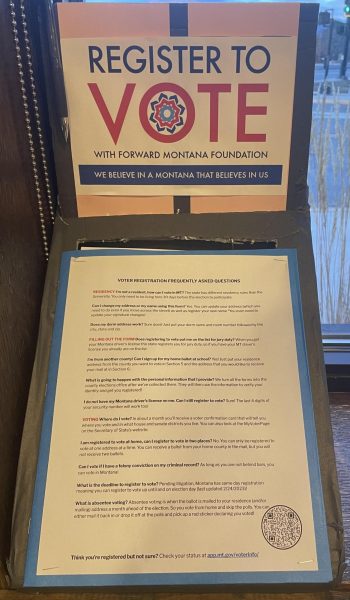It’s Time to Reimagine High School
We need real, substantial changes to the model of high school itself, creating a personalized and curious system rather than our current one-size fits all model. Essentially, what would it look like if we made high school a little more like college?
The government needs to increase funding to public schools, to revitalize our schooling system and to ensure a brighter and more equitable future for our youth.
Looking at the 83 high schools in Montana, it may not seem that we are in a crisis. The average high school graduation rate is 90 percent, but that number may be misleading. I know this, because I am a high school senior in Montana.
Many of the graduating students will not be prepared for college. According to an Achieve report from 2016, of the 39% of Montana’s Class of 2014 who entered the Montana University System, almost a quarter were placed in remedial math courses. There are graduates who are left out, who, in this age of ever increasing automation, will not be able to find a job. High school is supposed to prepare us for the future, but I’m scared.
What am I supposed to do in the future if high school doesn’t prepare me for life? How am I supposed to get a job? I’m told to go to college, but how will I pay off the debt?
These questions and more don’t have easy fixes. They need real, substantial changes to the model of high school itself, creating a personalized and curious system rather than our current one-size fits all model. Essentially, what would it look like if we made high school a little more like college?
I caught a glimpse of this in Hellgate’s response to the COVID-19 pandemic. The current block schedule has blended some of the benefits of the longer class periods from last year’s hybrid model, with the ease of continuing classes without substantial interruptions. The strict bell schedule of seven short periods a day, every day, is unsustainable and drives burn out. It increases fatigue and reduces productivity, especially for classes at the end of the school day.
Another key recent change is the pushed back school start. While last year we were lucky to not start until 10:00 a.m., the late start time of 9:00 a.m. we now use is still a big improvement. The ability to sleep in late and have some free time in the morning before school is extremely beneficial for students, especially teenagers who need a lot of sleep. My morning routine used to be waking up and rushing out the door. Now, I have time to eat breakfast or catch up on homework. This delayed start gives teachers extra prep time and students don’t fall asleep in class as often as we did when school began before the sun rose. As we move forward, these new schedule changes should stick around.
Although there are massive drawbacks to learning from home, the increased comfort of beds, couches, and chairs is something we should bring into the classroom. These changes will spur creativity and create an environment that’s more conducive for learning, as simple as they are. A shift away from the routine of sitting in a plastic chair at a small desk for hours on end, could be just what is needed to re-energize students and help us feel more comfortable while we learn.
I’ve started embracing that spirit in several of my classes. In English, when we have silent reading days for our literature circles, I’ve been reading on the floor. This simple change of sitting on the floor by my chair, with my back against a wall, keeps me engaged – it definitely makes it easier to read 19th century Russian literature. The newspaper and yearbook shared computer lab has a couch, a popular spot for students to sit and work from. If anything, these changes make students more productive. As office spaces move towards more ergonomic designs to improve worker health and productivity, schools should follow.
We also need to reframe the concept of homework. Rather than constant busy work, due day after day, homework should be used to break down the walls of formal learning. Filling out pages of study guides, regurgitating information from a textbook, or solving endless versions of the same math problem with different values, does not significantly improve my understanding of concepts. Beneficial homework assignments prioritize creative thinking and application of concepts. Most importantly – they’re often less time consuming, and should be assigned less frequently. Homework would have much more power if it was used to promote exploring one’s passions and interests, and to connect real world action to classroom learning. Rethinking homework and shifting the conversation around what it should be is an important step in making schools more inclusive.
The typical four year graduation requirement plan needs to change. Each student should be able to design their own graduation plan in consultation with their counselor and family. If a student wants to focus on primarily STEM classes or art classes, let them.
I fell in love with journalism freshman year and chose to take newspaper electives all four years of high school. And on top of the 2.5 social studies credits required for graduation, I have an additional 4.5. As a result, due to the strict graduation requirements of MCPS and the advanced classes I’m taking, I was unable to find space in my schedule to take a second year of P.E. Ultimately, I had to ask the administration to get a physical education credit waived in order to graduate on time. To be able to explore my passions, I’ve had to push myself to the limit and work harder than any high schooler should be expected to.
In this day and age, to get a good job it is more important to demonstrate abilities like creativity, leadership, communication, and analytical and interpersonal skills. Graduation requirements written for the workforce of 30 or 40 years ago do not apply to the world today. While it is important that all graduating students demonstrate competency with concepts such as basic math skills and U.S. history knowledge, by the time students have reached high school they should be able to invest most of their time in classes they find stimulating. By focusing on courses of interest, students will be more involved in school and more willing to learn and think creatively.
For certain classes, there should always be an option to “test out,” or demonstrate mastery of the course material on day one. This would prevent the scenario where students who could have passed the class on the first day are stuck for a year, while students who need more time are rushed through concepts before they are ready so the teacher can keep the class together. Just like in college, if a student does not need to take a class, they shouldn’t. Schools should set expectations that students will graduate in three to five years, rather than assuming all students will be at the same level of readiness after exactly four years.
In this scenario, it’s also important that students are allowed to learn and demonstrate understanding in their own way. Students are all different and their brains work in different ways. For schools to be fair, tests shouldn’t be biased towards certain learning styles, and teachers should provide options for students to learn in multiple ways. A universal method of teaching content to everyone does not work for everyone, contrary to what our current education system would like to believe.
As a student who has taken many AP and IB courses, I believe we can learn a lot from the International Baccalaureate organization. My IB courses focus on skills, not content. We’re taught to strive to be learners and achieve the Learner Profile: to be knowledgeable, principled communicators; balanced and open-minded risk-takers; reflective and caring inquirers and thinkers.
This curriculum is such a stark contrast to so many other classes I’ve taken in high school, and I believe schools all across the United States can learn from this model. Focus on the student as a whole and promote ways of thinking instead of cramming as much content as possible into our brains.
In my reimagined school, teachers aren’t the only ones doing the grading. I believe students should be given a chance to grade their teachers too. We should get to give teachers grades based on how well we feel we are being taught, and how engaged and supportive our teachers are. Teachers, in turn, would receive pay raises each year based on their grades – pay raises they desperately need and deserve.
This would fix so many problems. Students would get a voice—they surely know more about which teachers are good than administrators can guess from test scores and passing percentages. Teachers would be motivated to teach better, and they would be paid better. Happier teachers lead to better education and happier students.
My last suggestion—this is a big one—would be to do away with summer break. So much of each school year is used to reteach material that was forgotten over the break. Learning loss over the summer is real and a big problem, especially for underserved populations who do not have as much access to summer programs.
To replace summer break, I propose that schools institute more frequent short breaks. Think spring break, but one break every six weeks or so. I believe this concept of rests from school but not resets would benefit students by avoiding the burnout that comes from them having to be enrolled in school for nonstop five day weeks, for months in a row.
Achieving these goals will not be easy—not by a long shot. In public schools like Hellgate, we need more money from the government. The money exists, the budgets just need to be readjusted to better fund schools. A well educated population is the most important variable to ensure a bright future for a nation. Lower rates of unemployment, a more active economy and a more intelligent population—who could object?
I believe the most important thing we need to achieve in education is for schools to look at students as people—not as figures or graduation rate statistics. If schools were measured on a student by student basis, they might be more motivated to bring each student to success. Schools need to serve as a leveling ground, not a place of further division.
We need to think creatively. The pandemic has forced schools to operate in new ways, and we need to keep reimagining education. Let’s lean into the change and build schools that work better for all students.

Just a girl who fell in love with journalism and never looked back. This is my third year with the Lance and my second year as Co-Editor. I also play soccer...









